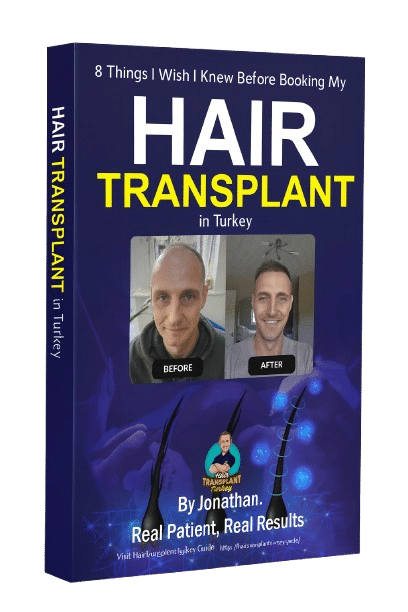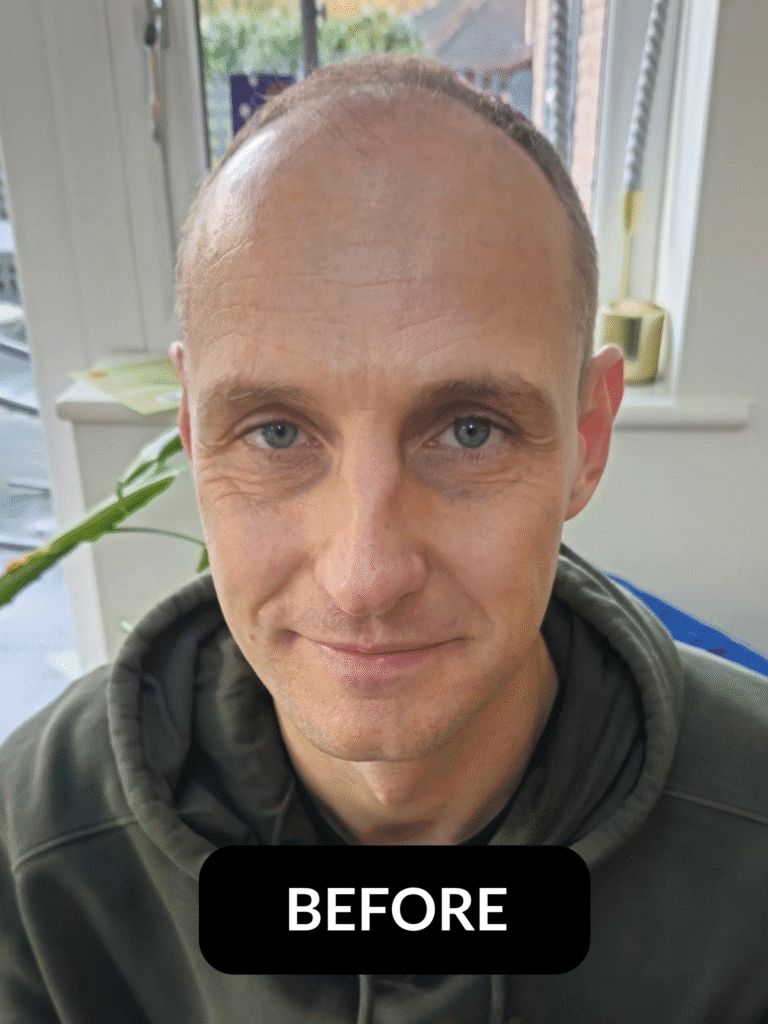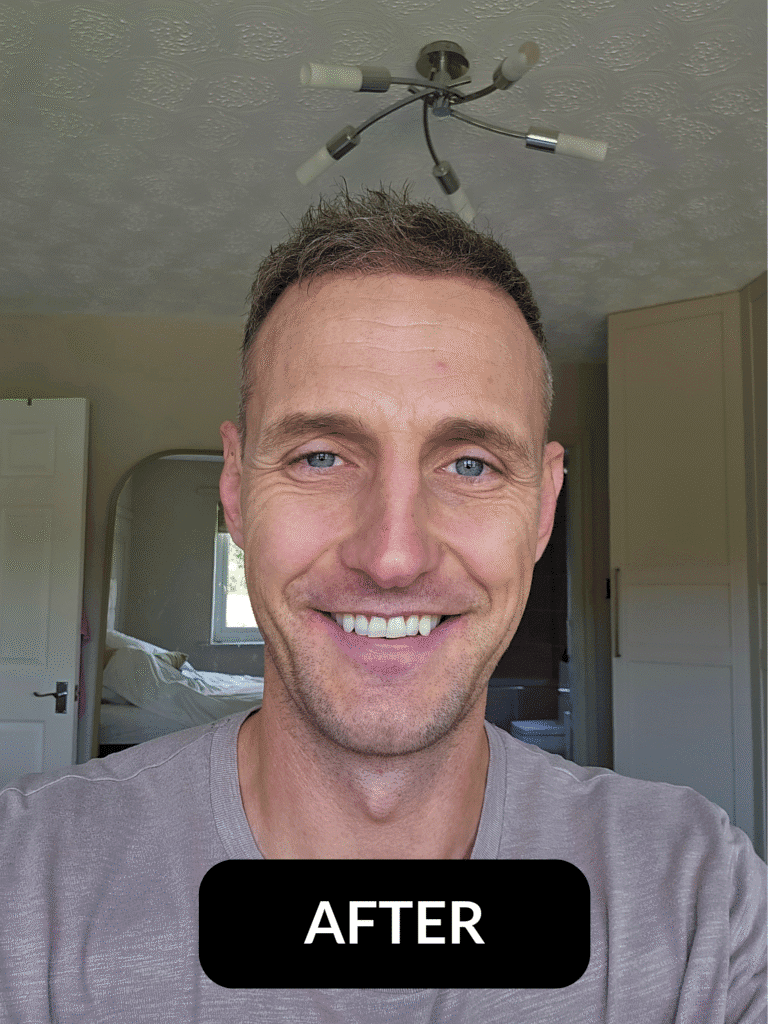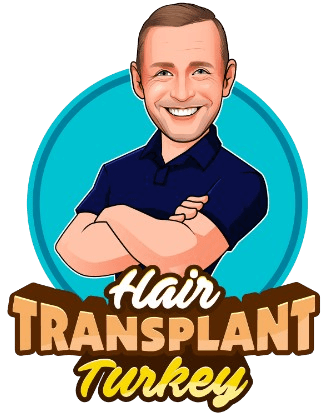Thinking Of Getting A Hair Transplant In Turkey?
"Discover Everything I wish I knew Before Getting One!"
Download the FREE Ebook Now!
This 10 Minute Read Could Change The Wa You Think About Turkish Hair Transplants

ABOUT ME
Hi, I’m Jonathan, and in January 2025 I flew to Istanbul, Turkey to get a hair transplant. I’m absolutely delighted that I (finally!) got it done, BUT I delayed it for many years because I didn’t have the knowledge or confidence to do it sooner.
However, I documented the main things I wish I knew before getting a hair transplant.
I hope it helps you to better understand what to expect and maybe even give you the knowledge and confidence to get it done.
Downlaod it for free by clicking below.


Testimonials From The Clinic I Used





Hair Transplant in Turkey: Costs, Clinics, FUE & DHI Explained
If you’re considering a hair transplant, Turkey has likely appeared on your radar. Every year, thousands of people travel to Istanbul for hair restoration procedures, drawn by competitive pricing, experienced surgeons, and proven results. But what makes Turkey such a popular destination, and how do you navigate the process?
In January 2025, I flew to Istanbul for my own hair transplant at Clinicana. Seven months later, I’m thrilled with the results. This guide shares everything I learned along the way, helping you understand what to expect when getting a hair transplant in Turkey.
Why Turkey Leads in Hair Transplants
Turkey has become the global leader in hair transplants, performing over 500,000 procedures annually. Istanbul alone hosts hundreds of specialized hair clinics, making it the undisputed hub for hair restoration.
Several factors explain why Turkey dominates this industry:
Affordability without compromising quality. The cost of living in Turkey means clinics can offer procedures at a fraction of Western prices while maintaining high standards. A hair transplant in Turkey typically costs 60-70% less than in the UK or US.
Specialized expertise. Turkish surgeons perform hair transplants daily, developing exceptional skill through sheer volume. Many clinics exclusively focus on hair restoration, with teams that have completed thousands of procedures.
Medical tourism infrastructure. Turkey actively supports medical tourism, with clinics offering comprehensive packages that include accommodation, transfers, and translation services. International patients arrive to find a streamlined process designed specifically for them.
Advanced techniques. Clinics in Istanbul quickly adopt the latest hair transplant methods, from Sapphire FUE to DHI implantation. Investment in modern equipment and ongoing training keeps Turkish clinics at the forefront of the industry.
According to the International Society of Hair Restoration Surgery (ISHRS), Turkey performs more hair transplant procedures than any other country, driven by high surgical volumes and specialised clinics focused exclusively on hair restoration.
When I researched clinics, I was impressed by the professionalism and medical standards. Clinicana operates inside Acıbadem Taksim Hospital, a certified medical facility regulated by the Turkish Ministry of Health and compliant with ISO 9001 standards.
To find out more about the clinic I used check out my Clinicana Review now.
What Is a Hair Transplant? (Definition & Methods)
A hair transplant is a surgical procedure that moves healthy hair follicles from a donor area (usually the back or sides of the head) to areas experiencing hair loss. Unlike topical treatments or medications, a hair transplant provides permanent results because the transplanted hair follicles are genetically resistant to hair loss.
The procedure works through a straightforward principle: surgeons extract individual follicles from areas with dense hair growth and carefully implant them into thinning or balding areas. Once transplanted, these follicles continue growing hair naturally for life.
Modern hair transplantation has evolved significantly. Early techniques left visible scarring and unnatural-looking results. Today’s methods, particularly FUE and DHI, create natural hairlines with minimal scarring and faster recovery times.
During my consultation at Clinicana, the surgeon carefully examined my donor area, measured hair density, and calculated how many grafts I needed. This personalized approach ensures realistic expectations and optimal results.
FUE Hair Transplant in Turkey (Most Common Method)
FUE (Follicular Unit Extraction) is the most popular hair transplant technique in Turkey, and for good reason. This method involves extracting individual hair follicles using a specialized micro punch tool, leaving tiny circular wounds that heal quickly without linear scarring.
Here’s how FUE hair transplant works:
Extraction phase. The surgeon uses a punch tool (0.7-0.9mm diameter) to remove individual follicles from the donor area. Modern clinics in Turkey often use Sapphire FUE, which employs sapphire-tipped blades for more precise incisions and faster healing.
Preparation. Extracted follicles are carefully stored in a temperature-controlled solution to maintain viability. Technicians examine each graft under magnification to ensure quality.
Implantation. The surgeon creates tiny channels in the recipient area and places each follicle at the correct angle and depth to mimic natural hair growth patterns.
The Sapphire FUE hair transplant technique used at many Istanbul clinics offers several advantages. Sapphire blades create smaller, cleaner incisions compared to steel blades, reducing tissue trauma and promoting faster recovery. The precision allows for higher graft density, achieving fuller results.
Dermatology guidelines referenced by the European Academy of Dermatology and Venereology (EADV) note that modern FUE techniques, when carried out by trained specialists, can achieve high graft survival and natural-looking hairlines with minimal scarring.
My own FUE procedure at Clinicana took approximately seven hours with breaks. The team’s attention to detail was remarkable—they carefully designed my hairline to look completely natural and match my facial features.
DHI Hair Transplant Technique
DHI (Direct Hair Implantation) represents an advanced evolution of hair transplant methods. Unlike traditional FUE, which requires creating recipient sites before implantation, DHI uses a specialized Choi implanter pen to extract and implant hair follicles in one motion.
The DHI process differs in several key ways:
Direct implantation. Hair follicles are loaded into the Choi pen and implanted immediately after extraction, reducing the time follicles spend outside the body. This potentially improves graft survival rates.
No pre-made incisions. The implanter pen creates the channel and places the follicle simultaneously, minimizing trauma to surrounding tissue and existing hair.
Precise control. Surgeons control the angle, depth, and direction of each implanted follicle with exceptional accuracy, important for achieving natural results.
Clinics in Istanbul have become specialists in DHI hair transplant procedures. While DHI typically costs more than standard FUE due to the specialized equipment and technique, some patients prefer it for areas requiring particularly precise work, such as hairline refinement.
When choosing between FUE and DHI, consider that both produce excellent natural results. FUE remains the most common choice for larger areas, while DHI might be recommended for specific cases. Your surgeon should explain which technique suits your particular needs.
How Much Does a Hair Transplant Cost in Turkey?
The hair transplant cost in Turkey is one of the main reasons people travel for treatment. Prices range from approximately €1,500 to €3,500 for all-inclusive packages, depending on the clinic, technique, and number of grafts required.
Breaking down the hair transplant price in Turkey:
Standard FUE packages: €1,800-€2,500
- Includes consultation, surgery, hotel accommodation, transfers, medications, and aftercare products
- Suitable for most patients requiring 3,000-4,500 grafts
Sapphire FUE packages: €2,500-€3,000
- Uses advanced sapphire blade technology
- Faster healing and potentially denser results
DHI packages: €3,000-€4,000
- Premium technique with Choi implanter pen
- Recommended for precision work and smaller areas
Factors affecting price:
- Number of grafts needed (calculated based on your specific hair loss pattern)
- Technique chosen (FUE vs Sapphire FUE vs DHI)
- Clinic reputation and surgeon experience
- Package inclusions (standard vs premium hotels, additional treatments)
I chose the standard package at Clinicana for €2,850, which included everything I needed: consultations, FUE surgery, four-star hotel accommodation at Naz City Hotel Taksim, all transfers, translation services, and a comprehensive aftercare kit. There were no hidden costs or surprise charges.
Compared to UK prices (£5,000-£15,000) or US prices ($7,000-$20,000), getting a hair transplant in Turkey delivers substantial savings without compromising quality. However, always research thoroughly—extremely low prices may indicate inexperienced surgeons or poor conditions.
Best Hair Transplant Clinics in Istanbul
Choosing the right hair transplant clinic in Istanbul requires careful research. With hundreds of options, focus on clinics that demonstrate genuine expertise, proper accreditation, and transparent practices.
What to look for in a hair clinic in Turkey:
Medical credentials. The clinic should be licensed by the Turkish Ministry of Health and ideally hold ISO certification. Check that qualified doctors lead procedures, not just technicians.
Surgeon experience. Research the lead surgeon’s qualifications, specialization in hair restoration, and years of experience. Look for memberships in organizations like ISHRS (International Society of Hair Restoration Surgery).
Real patient reviews. Examine Google reviews, Trustpilot ratings, and patient testimonials. Be wary of clinics with only perfect reviews or suspiciously generic feedback.
Clear communication. A reputable clinic offers transparent information about procedures, costs, and realistic results. English-speaking coordinators should answer questions promptly and thoroughly.
Proper facilities. The best hair transplant clinic operates in a certified medical environment, not a basic beauty clinic. Hospital-based clinics like Clinicana offer additional safety and emergency capabilities.
Comprehensive packages. Top clinics provide all-inclusive packages covering accommodation, transfers, medications, and follow-up care, eliminating stress and hidden costs.
The World Health Organization advises medical tourists to choose clinics operating within regulated hospital environments and to verify surgeon credentials—a key reason many international patients prefer accredited centres in Istanbul.
When I selected Clinicana Hair Transplant & Esthetic Surgeries, several factors convinced me. The clinic operates inside Acıbadem Taksim Hospital, a modern private medical facility. Dr. Soner Tatlıdede, the chief plastic surgeon, has extensive experience and specializes in reconstructive procedures. The clinic had performed over 10,000 procedures with consistently positive reviews from international patients.
Their patient coordinator, Chinara Farzalieva, answered every question I had via WhatsApp, explaining the entire process clearly before I committed. This level of communication gave me confidence I was making the right choice.
Hair Transplant Packages in Turkey
Hair transplant packages in Turkey typically include far more than just the surgery itself. These all-inclusive deals handle logistics, accommodation, and aftercare, making the process remarkably straightforward for international patients.
Standard packages typically include:
Pre-procedure consultations – Initial hair analysis, graft calculation, and hairline design The surgery itself – FUE, Sapphire FUE, or DHI procedure Accommodation – 3-4 nights in a partner hotel (usually 3-4 star) Airport transfers – Pickup and drop-off in private vehicles Clinic transfers – Transportation between hotel and clinic Medications – Antibiotics, pain relief, and anti-inflammatory drugs Aftercare products – Specialized shampoos, lotions, and healing sprays Post-op care – First wash at the clinic and detailed care instructions Translation services – English-speaking coordinators throughout your stay
Premium packages may add:
- Upgraded hotel accommodation (4-5 star)
- Additional meals
- Enhanced aftercare products
- PRP (Platelet-Rich Plasma) therapy to boost healing
- Longer accommodation stays
My experience with Clinicana’s standard package exceeded expectations. The Naz City Hotel Taksim provided comfortable accommodation just 200 meters from the clinic. Breakfast and dinner were included, and the hotel offered a free shuttle service (though the walk was easy).
Everything was scheduled via WhatsApp, so I always knew exactly where to be and when. The private driver met me at Istanbul Airport with a name sign, and transfers ran like clockwork throughout my stay.
What impressed me most was how the clinic provides everything you need without upselling aggressively. They recommended the package suitable for my needs rather than pushing the most expensive option.
Join Now (FOR FREE!) And Learn:
- The best hair transplant clinic in Turkey (and why!)
- How much it costs (and how to save some money)
- What results you can expect
- What to expect on the day of the transplant (including length of procedure and if it hurts!)
- People's reaction to my new hair
- Tips on how to get the best results from your hair transplant
- Frequently asked questions and answers from someone who’s experienced it first hand!
About The Clinic I Used
5,562+ 5-Star Reviews
Highly Qualified & Experienced Team
Satisfaction Guaranteed
More Reviews From Happy Customers...




Follow My Entire Hair Transplant Journey Today
Hair Transplant Journey in Turkey: From Consultation to Recovery
Understanding the complete hair transplant journey helps set realistic expectations. From initial contact to seeing your final results, the process typically spans 12-18 months, though you’ll only spend a few days in Turkey.
Before arrival:
Week 1-4: Research clinics and request online consultations. Send photos of your hair loss pattern for initial assessment.
Week 4-8: Choose your clinic and book your procedure. Coordinate travel dates with the clinic’s availability.
Week 8-12: Receive pre-procedure instructions. Stop certain medications, avoid alcohol, and plan time off work (usually 7-10 days recommended).
In Turkey (Days 1-4):
Day 1 – Arrival: Airport pickup and transfer to hotel. Evening consultation where the surgeon examines your hair, discusses expectations, and finalizes the procedure plan.
Day 2 – Surgery day: Morning preparation including hairline design and donor area shaving. The FUE procedure takes 6-8 hours with breaks for meals and rest. Post-procedure briefing and aftercare instructions.
Day 3 – First wash: Return to clinic for scalp cleaning. Medical staff teach you proper washing technique for the coming weeks.
Day 4 – Departure: Final check-up, receive medications and care products, airport transfer.
Recovery timeline after returning home:
Days 5-7: Small scabs form around transplanted follicles. Redness gradually fades. Sleep upright to minimize swelling.
Days 7-14: Most scabs naturally fall away during gentle washing. You can wear loose hats. Many people return to desk jobs after 7-10 days.
Weeks 2-4: Transplanted hairs enter “shock loss” phase and fall out. This is completely normal—the follicles remain and will produce new growth.
Months 3-4: New hair begins sprouting. Growth appears thin initially but gradually thickens.
Months 6-9: Significant improvement becomes visible. Hair gains density and texture.
Months 12-18: Full results emerge. Transplanted hair reaches its maximum density and can be cut, styled, and treated like normal hair.
I’m currently seven months post-procedure, and my hairline is clearly visible, dense, and completely natural-looking. Friends who didn’t know about my transplant haven’t noticed anything unusual—they just think my hair looks healthier.
Aftercare and Recovery: Caring for Your New Hair
Proper aftercare directly impacts the success of your hair transplant. While clinics provide detailed instructions, understanding the key principles helps you protect your investment and achieve optimal results.
First 10 days (critical period):
Gentle washing: Start washing on day 3 as instructed. Use the clinic-provided shampoo and apply with extremely light pressure—no rubbing or scratching. Water should be lukewarm, never hot.
Sleep elevated: Sleep upright or semi-upright for the first week to minimize swelling. Use a travel pillow or prop yourself with regular pillows.
Avoid touching: Resist the urge to touch or pick at scabs. Let them fall naturally during washing.
No sweating: Avoid exercise, heavy lifting, or activities that cause sweating for 10 days. Sweat can irritate grafts and increase infection risk.
Protect from sun: Stay out of direct sunlight. Wear a loose hat if you must go outside.
Medication compliance: Take all prescribed antibiotics and anti-inflammatory medications exactly as directed.
Weeks 2-4:
Resume light exercise but avoid anything that causes heavy sweating. You can return to most normal activities, though continue being gentle with your scalp. Scabs should have completely fallen away by week 3.
Months 1-3:
Hair enters the shedding phase—don’t panic! This temporary loss is expected and means follicles are resetting. You can resume all normal activities, including vigorous exercise and swimming.
Months 3-12:
Focus on general hair health. Eat a balanced diet rich in protein, vitamins, and minerals to stimulate hair growth. Stay hydrated. Some patients use minoxidil or biotin supplements, though discuss this with your surgeon first.
The British Association of Dermatologists stresses the importance of structured aftercare following a hair transplant, noting that proper washing routines and infection control significantly improve long-term results.
Clinicana provided excellent aftercare support through WhatsApp. When I had questions about the shedding phase, they responded within hours, reassuring me this was perfectly normal. Scheduled check-ins at 1, 3, and 6 months helped track my progress.
The care products they provided—specialized shampoo, lotion, and spray—lasted throughout the critical healing period. Following their instructions precisely contributed significantly to my natural results.
Common Risks and How to Minimize Them
While hair transplant surgery in Turkey is generally safe, understanding potential risks helps you make an informed decision and recognize warning signs.
Potential complications:
Infection: Rare when proper sterile techniques are used. Signs include excessive redness, swelling, pus, or fever. Prevented through antibiotics and good hygiene.
Shock loss: Temporary shedding of existing hair around the transplant area due to surgical trauma. Usually resolves within months as hair regrows.
Poor graft survival: Some transplanted follicles may not thrive. Skilled surgeons typically achieve 85-95% graft survival rates through proper extraction, storage, and implantation techniques.
Unnatural appearance: Results from poor hairline design or incorrect follicle angles. Choosing an experienced surgeon dramatically reduces this risk.
Scarring: FUE creates tiny dot scars in the donor area, typically invisible once hair regrows. Excessive scarring indicates poor technique or individual healing issues.
Bleeding or swelling: Mild bleeding during the first day and some swelling for 3-5 days are normal. Excessive or prolonged symptoms require medical attention.
How to minimize risks:
Choose wisely: Research clinics thoroughly. Verify medical licenses, check surgeon credentials, and read authentic patient reviews.
Follow instructions: Strict compliance with pre-procedure and aftercare guidelines significantly reduces complications.
Communicate openly: Disclose all medical conditions, medications, and allergies during consultation.
Watch for warnings: Contact your clinic immediately if you notice signs of infection, excessive bleeding, or unusual symptoms.
Have realistic expectations: Understand that results take time and vary based on individual factors like hair characteristics and healing response.
My procedure at Clinicana was performed in a sterile hospital environment with advanced hair techniques and experienced medical staff. The team’s professionalism and attention to hygiene gave me confidence throughout the process.
I experienced only minor swelling for three days and slight redness for about a week—completely normal reactions. By following aftercare instructions carefully, I avoided any complications.
Real Results: Before & After Transplants in Turkey
The ultimate measure of any hair transplant clinic is the natural results they achieve. When evaluating clinics, examine before-and-after photos carefully, looking for hairlines that suit each patient’s face, appropriate density, and hair that grows in natural directions.
What to look for in results:
Natural hairline design: The hairline should have slight irregularity, not a perfectly straight “pluggy” appearance. It should complement facial features and appear age-appropriate.
Appropriate density: A full head of hair doesn’t mean every area is packed with maximum grafts. Natural hair has varying density, with the hairline slightly less dense than mid-scalp.
Proper angling: Hair should grow in the correct direction—forward at the hairline, with natural whorls and angles throughout. Poor angling creates an artificial appearance.
Even distribution: Grafts should be distributed to create balanced coverage without obvious patches or overly dense areas next to sparse ones.
Graft survival: Compare the number of grafts transplanted to the visible density in final results. High-quality clinics achieve 85-95% graft survival rates.
My personal results:
Before my transplant, I had noticeable recession at the front—essentially bald in that area. Seven months later, I have what I’d describe as a really good head of hair. The hairline looks completely natural, the density has steadily improved, and nobody guesses I’ve had a transplant.
The most rewarding moment was when a friend commented that my hair looked great, asking what products I was using—they genuinely thought it was just healthier natural hair growth.
According to the Mayo Clinic, 10-80% of transplanted hair typically grows back within 3-4 months, with full results visible by 12 months. My experience aligns perfectly with this timeline. A PubMed study on FUE showed an 85% graft survival rate and over 90% patient satisfaction after 12 months.
A peer-reviewed PubMed study on FUE hair transplantation reported graft survival rates of around 85% and patient satisfaction above 90% after 12 months, supporting the effectiveness of modern FUE methods used in leading Turkish clinics.
When reviewing results from any clinic in Turkey, ask to see multiple examples, preferably with different hair types and loss patterns. Real patient results demonstrate a surgeon’s versatility and skill.
Take the Next Step in Your Hair Restoration Journey
Deciding to get a hair transplant is a significant choice, and having the right information makes all the difference. I spent years hesitating before finally taking action—and I wish I’d done it sooner.
If you’re considering a hair transplant in Turkey, learn from someone who’s been through the entire process. I’ve documented my journey from initial research through recovery, sharing insights that help you avoid common mistakes and set realistic expectations.
Download my free ebook: “8 Things I Wish I Knew Before Getting a Hair Transplant in Turkey” for practical advice that goes beyond what clinics tell you in consultations.
Your hair restoration journey starts with knowledge. Whether you choose Istanbul or another destination, FUE or DHI, make your decision with confidence based on real experience and honest guidance.
How much does a hair transplant in Turkey cost?
Prices range from €1,500 to €3,500 depending on technique, number of grafts, and package inclusions. Standard FUE packages average €2,000-€2,500, while premium techniques like DHI cost €3,000-€4,000.
How many grafts do I need?
This varies based on your hair loss pattern and desired density. Most procedures use 2,500-4,500 grafts. Your surgeon calculates the exact number during consultation based on your donor area and recipient site size.
Is it safe to get a hair transplant in Turkey?
Yes, when choosing accredited clinics with qualified surgeons. Look for facilities licensed by the Turkish Ministry of Health, operating in certified medical environments, with experienced doctors leading procedures.
What's better: FUE or DHI?
Both produce excellent results. FUE is more common, proven, and typically less expensive. DHI offers more precise control and potentially higher graft survival but costs more. Your surgeon should recommend the technique suited to your needs.
How long does recovery take?
Most people return to work after 7-10 days. Scabs fall away within 2 weeks. You can resume normal activities after 10-14 days, though transplanted hairs will shed before regrowing starting around month 3.
Can women get hair transplants in Turkey?
Absolutely. Women experiencing pattern hair loss, thinning, or traction alopecia often benefit from transplants. The procedure and recovery process are the same as for men.
What's included in a hair transplant package?
Standard packages include surgery, consultations, hotel accommodation, airport and clinic transfers, medications, aftercare products, and post-op support. Premium packages may add upgraded hotels, meals, or PRP therapy.
Is it safe to travel alone to Turkey?
Yes. Clinics cater extensively to solo international patients, providing English-speaking coordinators, organized transfers, and constant support. Many patients travel alone without issues.
Can hair thinning return after a transplant?
Transplanted hair is permanent because follicles are taken from areas genetically resistant to hair loss. However, existing hair not transplanted may continue thinning over time due to ongoing male pattern baldness.
When will I see results?
Initial growth begins around month 3-4, with noticeable improvement by month 6. Full results typically appear between months 12-18 as transplanted hair reaches maximum density and maturity.


 Continue with Google
Continue with Google